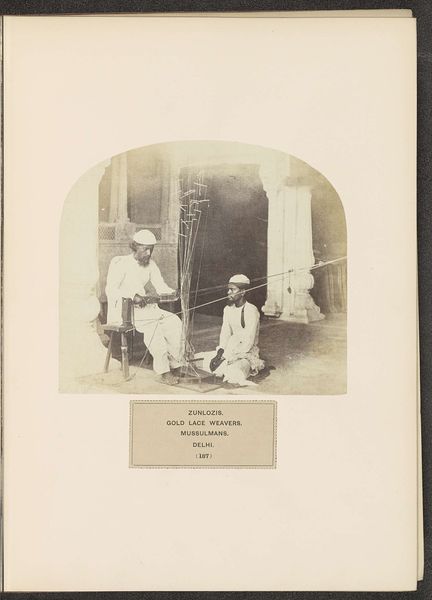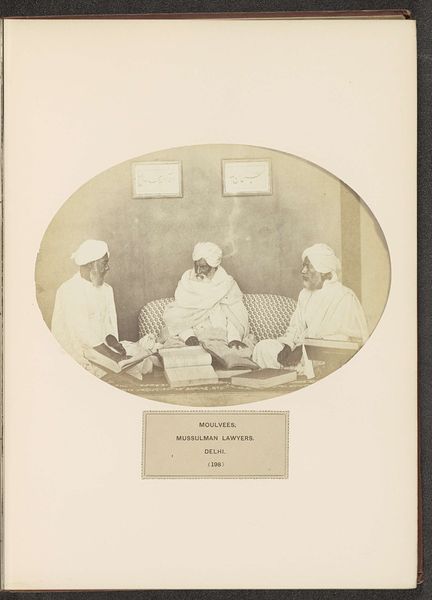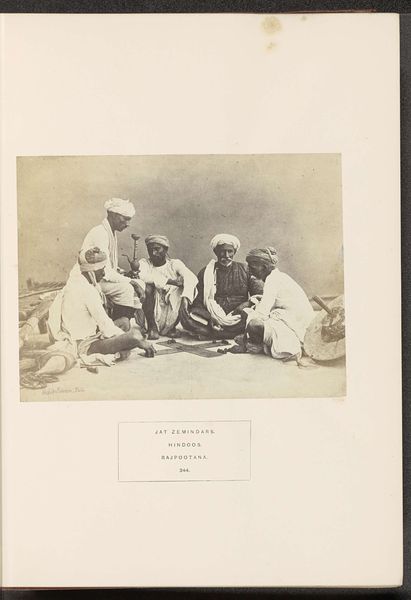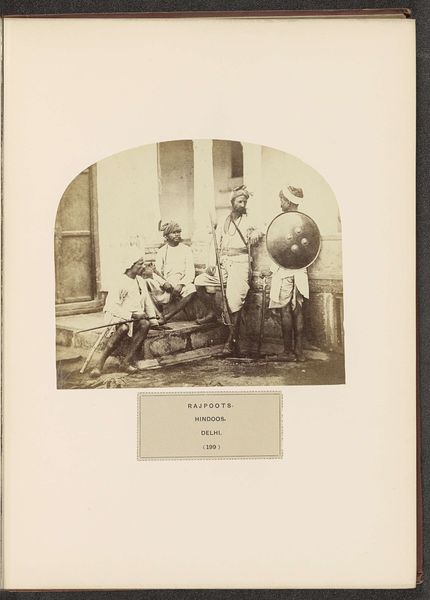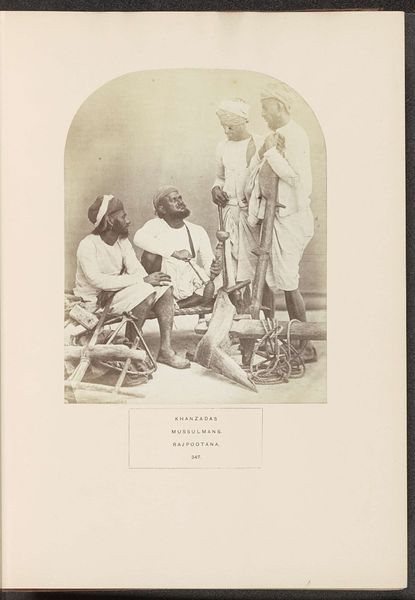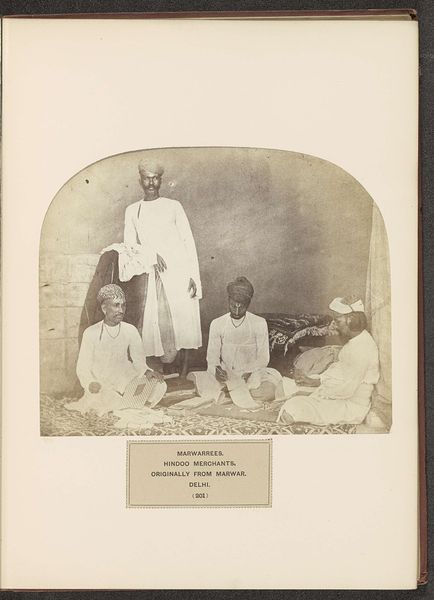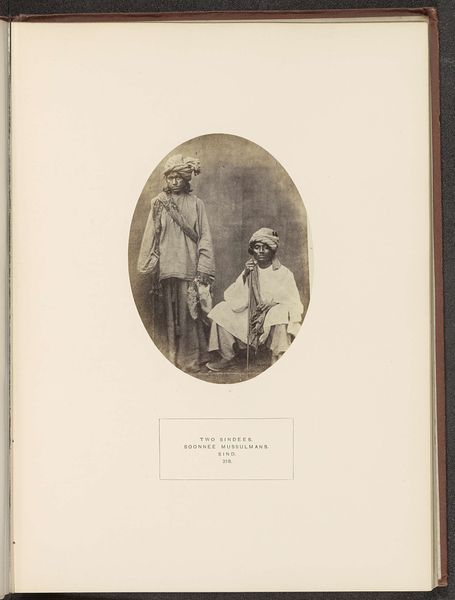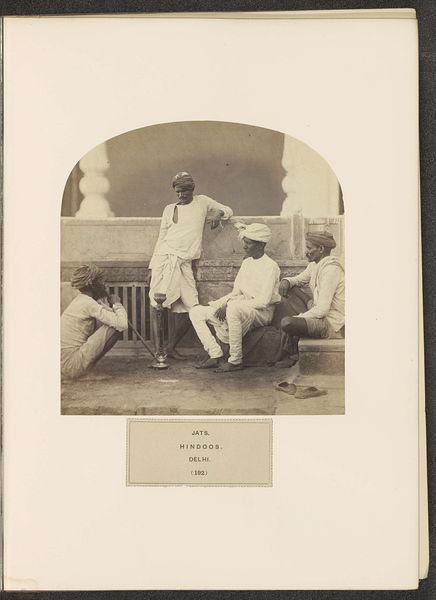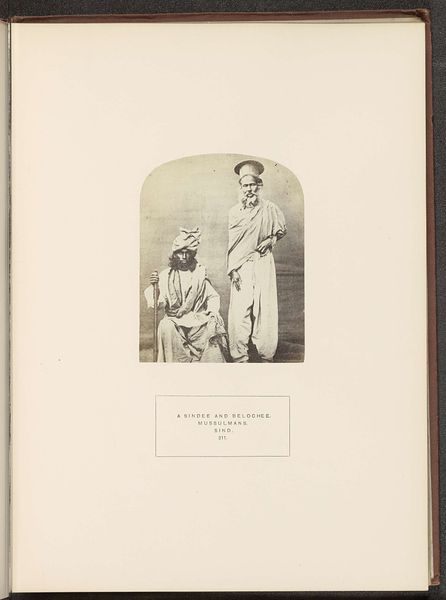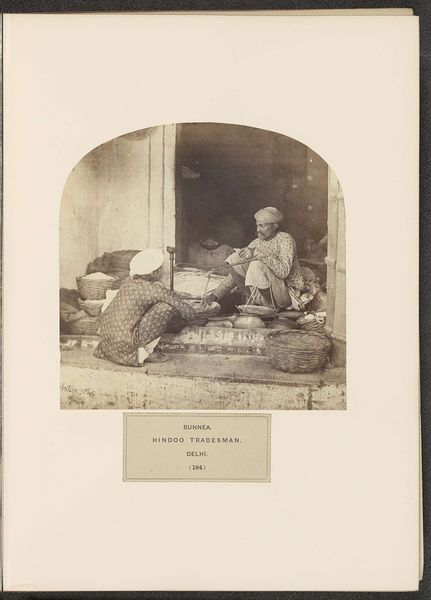
photography
#
portrait
#
aged paper
#
light pencil work
#
pencil sketch
#
asian-art
#
old engraving style
#
sketch book
#
figuration
#
photography
#
personal sketchbook
#
pen-ink sketch
#
orientalism
#
ink colored
#
sketchbook drawing
#
sketchbook art
Dimensions: height 150 mm, width 119 mm
Copyright: Rijks Museum: Open Domain
Curator: This photographic print, titled "Geldwisselaar met een man voor zijn handel in Delhi," made before 1869 by Shepherd & Robertson, presents two figures in what appears to be a business transaction. Editor: There’s a stillness about the composition, despite its subject. The tonal range is quite limited, lending an almost ghostly presence to the subjects, emphasizing line and form rather than texture. Curator: The photograph invites a study of gesture, certainly. Note the man offering, handing something – perhaps currency. Consider too what it meant to document figures from different cultures at this historical juncture. What stories do they hold? Editor: The composition creates a definite visual hierarchy; one figure is elevated, placed higher, in an arrangement which guides the eye. It's very carefully constructed. There’s a formality about the photograph; it seems almost staged, as if representing a generalized transaction rather than a candid snapshot of a particular exchange. Curator: Certainly, elements of orientalism pervade such portraiture, but at the same time, there's an intimacy. The figures, with their dress, convey the specificity of Delhi and a specific socio-economic reality. The symbols represented, money and the act of trade, remain cross-cultural. Editor: The background dissolves into a sort of blur, placing complete emphasis on the figures. It almost simplifies the scene to the relationship between them, minimizing contextual distractions. This is about form and narrative—that interplay really catches my attention. Curator: For me, the power rests in its capacity to connect with cultural memory—an encounter frozen in time which then speaks to present audiences across historical distances. Editor: Precisely! It exemplifies how photographic composition—line, tone, and the staging of subjects—shapes the stories that those cultural encounters come to tell.
Comments
No comments
Be the first to comment and join the conversation on the ultimate creative platform.
